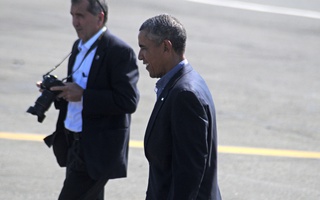Two scholars at the Kennedy School of Government seek to increase the number of low-income students applying to higher education institutions by simplifying the application form and formula for calculating federal financial aid.
The Free Application for Federal Student Aid (FAFSA) is a standard form that many college- and university-bound students fill out to apply for federal financial aid and tuition assistance, including Pell Grants.
The 2005-2006 FAFSA is a five-page form that includes 127 questions embedded within seven different steps, which assesses students’ abilities to afford college.
Associate Professor of Public Policy Susan M. Dynarski ’87 and Judith E. Scott-Clayton, a Kennedy School student, constructed a simplified formula through which federal aid is calculated based on two factors: income and number of dependents.
Their most recent discussion paper, entitled “College Grants on a Postcard: A Proposal for Simple and Predictable Federal Student Aid,” outlines a financial aid form that would fit on a single postcard.
“There is pretty good evidence that some institutional financial aid programs have increased college enrollment rates. However, there is little firm evidence that federal student aid increases college attendance,” Scott-Clayton said. “It seems to us that the simpler systems were getting good results, while the complicated systems weren’t.”
Critics have challenged that it is possible for families to conceal their assets in hopes of qualifying for federal aid. But Scott-Clayton said she believes that only a small group of people would attempt this sort of fraud, although those who succeed at manipulating the system would pose serious political risks.
Dynarski and Scott-Clayton released their discussion paper last month and presented the results at a forum in Washington, D.C.
On Capitol Hill, Representative Rahm Emanuel (D-Ill.) is also working to simplify the FAFSA form by allowing information from the Internal Revenue Service to be entered automatically into the financial aid formula.
The congressman’s proposal focuses on the procedure of filing for federal financial aid, but does not propose changes to the formula, according to spokeswoman Kathleen Connery.
Both Scott-Clayton and Harvard’s director of financial aid, Sally C. Donahue, said they do not believe that the changes suggested by the Kennedy School proposal will substantially affect most Harvard students’ aid plans.
Federal financial aid accounts for around $4,000 to 5,000 a year, according to Donahue, a long way from Harvard’s billed costs of over $45,600. The majority of financial aid that Harvard students receive comes from institutional grants and loans.
“There are many schools that are not in the fortunate position that Harvard is and cannot meet full need for their students,” Donahue said. “These kinds of changes could be very important for them.”
Kevin Gan ’07 said he applied late for the FAFSA because of the complexity of filling out FAFSA.
“It was kind of a pain to decode all the tax forms,” Gan said.
Read more in News
Giuliani, Obama Top IOP Youth PollRecommended Articles
-
Harvard Staves Off Aid CutsFunding for higher education this year escaped the Congressional Republicans' budget-cutting axe. And while financial aid officers at Harvard might
-
Fewer Aid Dollars Won't Hurt HarvardRecent changes to government regulations will decrease federal financial aid to college students by hundreds of millions of dollars next
-
Study Says Richer Universities Receive More Federal AidRicher universities often receive greater federal aid than poorer ones, a New York Times study has found. The institutions receiving
-
Haze Surrounds Aid for Drug UsersHigh school marijuana users everywhere breathed a heavy, smoke-tinged sigh of relief this past February 1. On that day, Congress
-
 Government Will Make FAFSA Available in October Next Year
Government Will Make FAFSA Available in October Next Year













